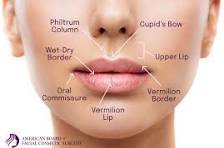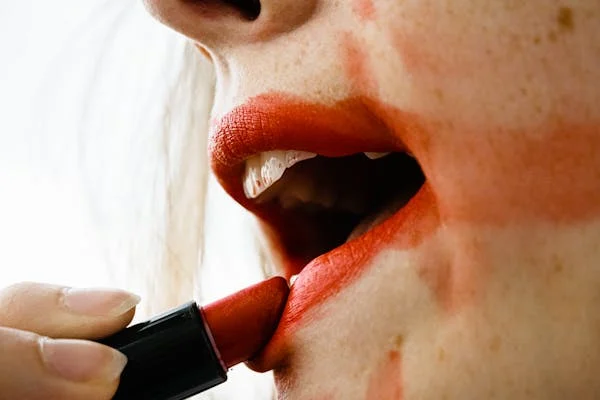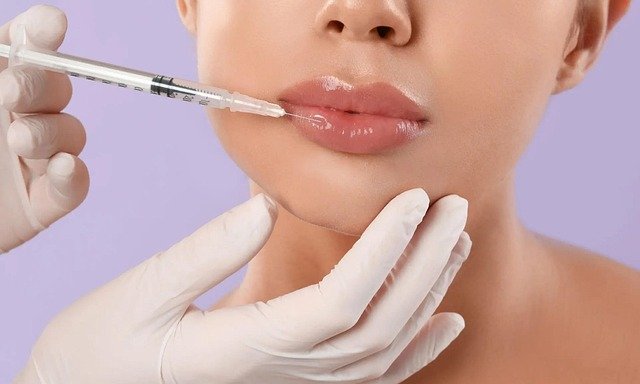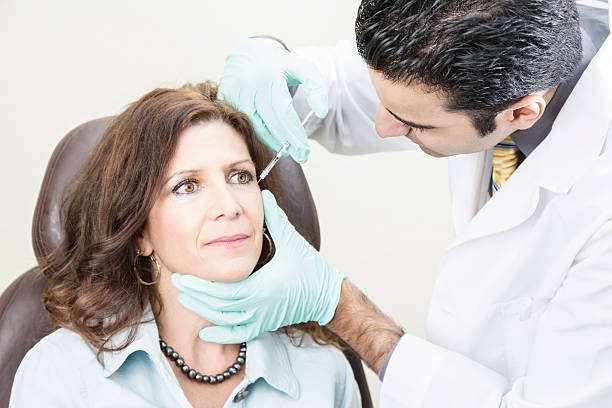Best Steps: Mastering Lip FillersSafely & Effectively”
If you’re diving into lip fillers, mastering the art safely and effectively for thin lips is key. With these 10 essential steps, you’ll navigate the process like a pro. From understanding different dermal filler types to choosing a skilled provider, each step plays a crucial role in achieving your desired pout. Safety measures such as researching techniques, side effects, and post-care tips ensure a smooth journey towards luscious lips that enhance your natural beauty.
Understanding Lip Anatomy

Facial Structure
Understanding the unique anatomy of each patient’s face is crucial for achieving natural-looking results with lip fillers. Different natural facial structures, including thin and aged lips, require Specific approaches for lip filler placement techniques. The shape and size of the lips should harmonize with the overall facial structure to avoid an unnatural appearance. For instance, individuals with thin lips may require a different approach compared to those with naturally fuller lips.
Lips can be categorized into three zones: the upper lip, the lower lip, and the transition zone in between. Each zone necessitates particular attention during a lip filler procedure, especially for thin lips, aged lips, to achieve balanced and proportional results. Focusing on enhancing Specific zones can help create a more aesthetically pleasing appearance tailored to each individual’s unique features. Practitioners need to consider these zones when planning and executing lip augmentation procedures.
Vascular Network
Knowledge of the vascular network in the vermillion lips is crucial to prevent complications during lip filler injections. Injecting fillers into blood vessels can result in severe issues such
as tissue necrosis or embolism, emphasizing why proper technique and understanding of vascular anatomy are paramount in minimizing risks during procedures. Practitioners must thoroughly understand the labial artery location within this intricate network when performing lip enhancement treatments.
Introduction to Lip Fillers
There are different types of fillers used for lip augmentation. Collagen-stimulating fillers are the most common Hyaluronic acid-based fillers and options. Each type has unique characteristics, longevity, and suitability based on patient needs. When choosing a filler, factors like the desired outcome, patient preference, injector expertise, and technique play crucial roles.
For example, hyaluronic acid-based fillers like Juvederm or Restylane offer temporary results lasting around 6-12 months. On the other hand, collagen-stimulating fillers such as Sculptra stimulate natural collagen production in the skin for gradual volume enhancement over time. The choice between these two depends on how long a patient wants their results to last and their willingness to undergo multiple treatments
Safety Profiles
Understanding the safety profiles of different lip fillers is vital in minimizing risks and side effects associated with treatment. Some fillers pose a higher risk of filler responses compared to others. Prioritizing approved dermal fillers with established safety records. adverse reactions or patient safety involves using the FDA
For instance, plastic surgeons at Kosmesis Aesthetic Plastic Surgery Center prioritize using FDA-approved dermal fillers due to their known safety profile backed by rigorous testing processes. This step ensures that patients receive safe treatments with Minimal chances of complications arising post-procedure.
Patient Preparation
Consultation
A comprehensive consultation is crucial before administering lip fillers to understand the patient’s desires, medical background, and suitability for the procedure. Setting realistic expectations, discussing potential risks, outlining the procedure’s limitations, and steps help build trust with patients. Moreover, this initial meeting is an opportunity to educate individuals on post-treatment care requirements and long-term maintenance.
- Discussing goals and medical history
- Managing expectations and building trust
- Educating patients on aftercare
During consultations, Patients are informed about possible outcomes of the cosmetic procedure while addressing any concerns or questions they may have.
Pre-Treatment Advice
Providing pre-treatment guidance can enhance the effectiveness of lip ller treatments. Advising patients to refrain from blood-thinning medications or supplements before their
appointment can minimize complications during and after the procedure. Encouraging proper hydration and skincare routines not only contributes to better results but also promotes quicker recovery post-treatment
- Avoiding blood-thinning substances
- Emphasizing hydration and skincare
- Optimizing treatment outcomes
By following pre-treatment recommendations diligently, Individuals can prepare themselves adequately for a successful lip filler experience without unnecessary setbacks.
Consent Forms
Obtaining informed consent through detailed documentation safeguards both participants and injectors involved in lip filler procedures. Consent forms should comprehensively cover potential risks such as allergic reactions or uneven results, alongside expected benefits like enhanced volume or symmetry in lips. These forms outline alternative treatments available if needed, as well as provide clear instructions regarding post-procedure care responsibilities.
- Ensuring understanding of risks
2. Outlining expected benefits
3. Clarifying post-treatment care
Signed consent forms serve as legal protection for both patients seeking cosmetic enhancements through lip fillers and healthcare providers conducting these procedures professionally.
Lip Filler Injection Techniques
Phi Technique
The Phi technique employs the golden ratio principle to achieve harmonious lip proportions. The ideal ratio between upper and lower lips is around 1:1.6, ensuring natural-looking results tailored to each individual’s facial features. Customizing treatment plans based on unique characteristics is vital for aesthetically pleasing outcomes.
To ensure symmetry in lip augmentation, it’s crucial to address any existing asymmetries during the injection process. Techniques like strategic placement play a key role in achieving balanced results. By carefully assessing and correcting asymmetries, a more even and proportionate appearance can be achieved post-treatment.
Advanced Techniques
Utilizing advanced techniques such as microcannulas or needle threading during lip filler injections can significantly reduce discomfort and bruising. These methods allow for precise filler placement while lowering the risk of vascular complications, enhancing safety levels considerably. Staying informed about these advanced approaches not only ensures patient comfort but also boosts overall satisfaction with the procedure.
When aiming for pain-free experiences during lip filler injections, several strategies can help manage discomfort effectively. Using topical numbing creams or local anesthesia before the procedure minimizes pain sensations significantly. Applying ice packs pre- and post-injection helps alleviate swelling and discomfort after treatment sessions.
Achieving Desired Results
Achieving desired results involves several crucial steps. One essential aspect is volume control, which focuses on gradually enhancing lip volume to ensure a natural look. Overfilling the lips can result in an unnatural appearance and discomfort for the patient.
Monitoring the amount of filler used during treatment is key to maintaining control over lip volume. By assessing the patient’s response throughout the process, practitioners can adjust accordingly to achieve optimal results without going overboard. This approach not only enhances safety but also contributes to more natural-looking outcomes that align with the patient’s expectations.
Another vital factor in achieving desired results with lip fillers is shape enhancement. Lip fillers are versatile tools that can be utilized to enhance specific features like defining the cupid’s bow or creating a more pronounced vermilion border. Strategic placement of fillers helps improve lip shape and contour effectively
Customizing each treatment plan based on individual lip characteristics ensures personalized outcomes that cater to each patient’s unique needs and goals. By tailoring lip placement according to specific enhancements desired by patients, practitioners can create beautifully enhanced lips while maintaining a natural look.
Lastly, Symmetry adjustment plays a significant role in refining lip filler results. After initial treatment, adjusting filler placement and volume can help correct any remaining asymmetries for a harmonious appearance. Fine-tuning these adjustments during follow-up visits allows for further refinement and symmetry corrections.
Maintaining open communication between patients and injectors is crucial throughout this process as it enables addressing concerns promptly and ensuring both parties are aligned on achieving desirable outcomes together
Managing Side Effects
Immediate Actions
After receiving lip filler injections, it’s crucial to take immediate steps to manage side effects. Applying cold compresses can reduce swelling and bruising. Avoid vigorous exercise or activities that increase blood ow to the face right after treatment. Following post-treatment the instructions provided by the injector is essential for optimal healing
To ensure a smooth recovery, taking care of your lips in the long term is equally important. Maintaining good overall skin health through proper skincare routines contributes significantly to long-term lip results. Protecting your lips from excessive sun exposure helps prevent premature aging of the skin around them. Regular follow-up visits with your injector allow for ongoing assessment and adjustment of long-term care plans.
Long-Term Care
Understanding the signs of vascular occlusion or blockage is crucial when dealing with lip fillers. Promptly recognizing symptoms like blanching, pain, or changes in skin color can prevent severe complications related to vascular occlusion emergencies. Injectors should be well-trained in managing these critical situations.
Aftercare Tips
Immediate Aftercare
After receiving lip fillers, patients must follow the immediate healing. Aftercare tips to ensure proper Avoiding extreme temperatures on the treated area is crucial for recovery. Applying prescribed creams or ointments can help reduce swelling and discomfort significantly. Educating patients about potential side effects and when to seek medical attention post-treatment is essential for effective aftercare management
- Providing aftercare instructions
- Avoiding extreme temperatures
- Using prescribed topical creams
- Educating about side effects
Follow-up visits play a vital role in monitoring treatment outcomes and addressing any concerns that may arise post-lip ller procedure. These visits allow for adjustments or touch-ups if needed to achieve the desired results effectively. Regular follow-up appointments provide an opportunity to establish long-term relationships with patients, ensuring continued care and satisfaction.
- Scheduling follow-up visits
- Assessing treatment outcomes
- Addressing patient concerns
- Building long-term relationships
Lifestyle Adjustments
Encouraging lifestyle modifications can contribute significantly to maintaining optimal lip filler results over time. Advising patients to quit smoking or reduce alcohol consumption can enhance the longevity of their lip fillers. Furthermore, avoiding excessive sun exposure and using SPF lip balms protects the lips from premature aging, preserving the aesthetic enhancements achieved through fillers
- Promoting lifestyle adjustments
2. Quitting smoking/reducing alcohol intake
3. Using SPF lip balms
Certification and Training
When seeking injectors for lip filler procedures, it is crucial to prioritize accreditation. Reputable organizations like the American Society for Dermatologic Surgery (ASDS) or the American Academy of Facial Plastic and Reconstructive Surgery (AAFPRS) set specific standards for training and expertise. Accreditation ensures that injectors have met these rigorous criteria, providing reassurance regarding their qualifications.
Experienced injectors understand the importance of continuous education in mastering lip filler techniques. By staying updated with the latest advancements through conferences, workshops, and seminars, they renew their skills to deliver safe and effective treatments. Patients benefit greatly from choosing injectors who are committed to ongoing learning in the field of lip fillers.
Ethical practice is paramount when selecting an injector for lip filler treatments. Ethical practitioners prioritize patient safety above all else by ensuring informed consent, realistic expectations, and adherence to professional codes of conduct during procedures. By choosing an ethical injector, patients can expect a responsible approach that focuses on their well-being throughout the treatment process.
Longevity and Maintenance
Filler Lifespan
Lip fillers’ longevity varies based on the filler type and individual factors like metabolism. Hyaluronic acid-based fillers typically last between 6 to 12 months in the lips. Educating patients about this helps manage their expectations for re-treatment planning.
Understanding how long lip fillers last is crucial for both patients and injectors. For instance, if a patient desires longer-lasting results, they might opt for different types of fillers that can stay intact for years.
Maintenance Tips
Encouraging patients to maintain a consistent skincare routine can help preserve lip filler results effectively. Using hydrating lip balms regularly keeps the lips moisturized, contributing
to prolong the effects of lip fillers over time.
Moreover, advising patients to protect their lips from environmental stressors such as sun exposure or extreme temperatures aids in maintaining the quality of the lip. Avoiding excessive movements like smoking or puckering can also contribute significantly to extending the lifespan of lip enhancements
Regular check-ups with injectors are essential not only for monitoring any changes but also for timely adjustments or re-treatment if necessary. This allows both parties to address any concerns promptly and ensure that the desired outcome is consistently achieved.
Re-Treatment Planning
During follow-up visits, discussing re-treatment options with patients enables them to plan effectively for maintaining their desired lip appearance over time. Assessing how long previous fillers have lasted helps determine when it’s appropriate to consider another treatment session based on individual needs.
Closing Thoughts
You’ve now journeyed through the intricate world of lip llers, from mastering injection techniques and aftercare tips. Remember, Safety and effectiveness go hand in hand in this art. As you embark on perfecting your skills, always prioritize patient preparation and managing side effects to ensure optimal results. Certification and ongoing training are crucial for staying at the top of your game.
Now that you’re equipped with these essential steps, dive into the realm of lip fillers with confidence and precision. Continuously refine your craft, stay updated on industry trends, and most importantly, prioritize the well-being of your clients. Your dedication to mastering this art will not only enhance your expertise but also ensure safe and beautiful outcomes for those seeking lip enhancement treatments.
Frequently Asked Questions
Can anyone perform lip filler injections?
No, only trained and certified professionals should administer lip fillers to ensure safety and optimal results. Seek qualified practitioners with expertise in facial anatomy for the best outcomes.
How long do lip fillers last?
The longevity of lip fillers varies depending on factors like the type of filler used and individual metabolism. Typically, results can last from 6 months to over a year before requiring touch-ups or additional treatments.
Are there common side effects after getting lip fillers?
Common side effects may include temporary swelling, bruising, or redness at the injection site. These usually subside within a few days. Severe complications are rare, but consult your provider if you experience prolonged discomfort or unusual symptoms.
What is the importance of patient preparation before a lip filler procedure?
Patient preparation is crucial as it helps ensure a smooth treatment process and reduces risks. Follow pre-procedure guidelines provided by your practitioner, such as avoiding blood-thinning medications and discussing any allergies or medical conditions beforehand.
How can I maintain my lip fillers for long-lasting results?
To maintain your lip fillers effectively, follow post-treatment care instructions diligently, stay hydrated, protect lips from excessive sun exposure, avoid smoking or excessive alcohol consumption, which can break down the filler faster. Regular consultations with your provider also aid in monitoring longevity
Longevity of Lip Fillers
Factors Affecting Longevity
Lip fillers can last between 6 to 18 months, but several Factors that influence how long they stay. The type of filler used plays a significant role in determining longevity. Thicker fillers tend to last longer than thinner ones. The body’s metabolism and how fast it breaks down the filler impact its longevity.
Some people’s bodies metabolize fillers more quickly than others, affecting how long the results last. Another crucial factor is the injection technique; when done properly by a skilled professional, the results are likely to be longer-lasting. Furthermore, lifestyle choices like smoking or excessive sun exposure can shorten the lifespan of lip fillers.
Maintenance Tips for Prolonged Results
To ensure your lip fillers last as long as possible, there are several maintenance tips you should follow. Staying hydrated is essential as dehydration can break down hyaluronic acid-based fillers faster. Avoiding activities that put pressure on your lips immediately after getting fillers helps them settle properly and ensures lasting results.
Regular touch-up appointments with your provider are vital for maintaining optimal results over time. These touch-ups help address any volume loss and maintain symmetry in your lips. Using sunscreen on your lips daily protects them from UV damage that can degrade lip components prematurely.



